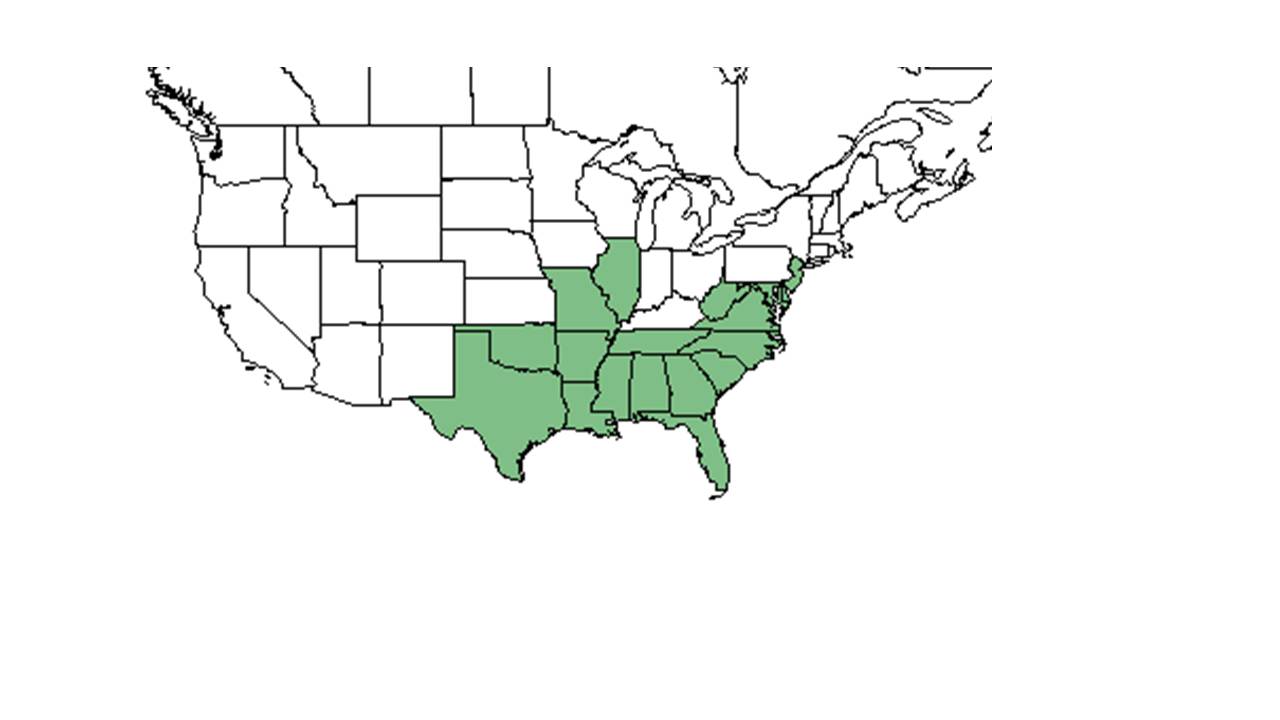Difference between revisions of "Aristida lanosa"
(→References and notes) |
|||
| Line 27: | Line 27: | ||
==Ecology== | ==Ecology== | ||
===Habitat=== <!--Natural communities, human disturbed habitats, topography, hydrology, soils, light, fire regime requirements for removal of competition, etc.--> | ===Habitat=== <!--Natural communities, human disturbed habitats, topography, hydrology, soils, light, fire regime requirements for removal of competition, etc.--> | ||
| − | It occurs in frequently burned upland longleaf pine-wiregrass communities, longleaf and shortleaf pine-oak hickory communities, loblolly pine plantations on Ultisols, the higher parts of pine flatwoods, as well as edges of unburned hardwood foresets (Brockway et al. 1997 | + | It occurs in frequently burned upland longleaf pine-wiregrass communities, longleaf and shortleaf pine-oak hickory communities, loblolly pine plantations on Ultisols, the higher parts of pine flatwoods, as well as edges of unburned hardwood foresets (Brockway et al. 1997: FSU Herbarium). Soil conditions range from wet to very well drained and sand to loamy sands. It is found in dry sandy soils of sandhill habitats and fields (Weakley 2015). It can also be found in human disturbed areas such as recreational areas, roadsides, longleaf pine clearings, dry sandy soil of campsites (FSU Herbarium). This species grows in large clumps together (FSU Herbarium). |
===Phenology=== <!--Timing off flowering, fruiting, seed dispersal, and environmental triggers. Cite PanFlora website if appropriate: http://www.gilnelson.com/PanFlora/ --> | ===Phenology=== <!--Timing off flowering, fruiting, seed dispersal, and environmental triggers. Cite PanFlora website if appropriate: http://www.gilnelson.com/PanFlora/ --> | ||
Revision as of 19:47, 8 July 2015
| Aristida lanosa | |
|---|---|
Error creating thumbnail: Unable to save thumbnail to destination
| |
| Scientific classification | |
| Kingdom: | Plantae |
| Division: | Magnoliophyta - Flowering plants |
| Class: | Liliopsida – Monocotyledons |
| Order: | Cyperales |
| Family: | Poaceae ⁄ Gramineae |
| Genus: | Aristida |
| Species: | A. lanosa |
| Binomial name | |
| Aristida lanosa Muhl. ex Elliott | |

| |
| Natural range of Aristida lanosa from USDA NRCS Plants Database. | |
Contents
Description
Common names: Woollysheath threeawn
Synonym names: A. lanosa var. lanosa, A. lanosa var. maacera
Distribution
Is found as north as New Jersey, south to Florida, and west to Texas (Weakley 2015).
Ecology
Habitat
It occurs in frequently burned upland longleaf pine-wiregrass communities, longleaf and shortleaf pine-oak hickory communities, loblolly pine plantations on Ultisols, the higher parts of pine flatwoods, as well as edges of unburned hardwood foresets (Brockway et al. 1997: FSU Herbarium). Soil conditions range from wet to very well drained and sand to loamy sands. It is found in dry sandy soils of sandhill habitats and fields (Weakley 2015). It can also be found in human disturbed areas such as recreational areas, roadsides, longleaf pine clearings, dry sandy soil of campsites (FSU Herbarium). This species grows in large clumps together (FSU Herbarium).
Phenology
Flowers from August to October and has been seen fruiting from October to November (Weakley 2015, FSU Herbarium).
Seed dispersal
Seed bank and germination
Fire ecology
Burning during the growing season is thought to primarily stimulate seed production by important grass species in longleaf pine wiregrass communities, possibly including Aristids lanosa (Biswell and Lemon, 1943; Streng et. al, 1993 cited by Brockway et al 1997). However, burning during winter is also beneficial.
Pollination
Use by animals
Diseases and parasites
Conservation and Management
Cultivation and restoration
Photo Gallery
References and notes
Florida State University Robert K. Godfrey Herbarium database. URL: http://herbarium.bio.fsu.edu. Last accessed: June 2014.
Biswell, H.H. and PC. Lemon, 1943. Effect of fire upon seed-stalk production of range grasses. Journal of Forestry, 41: 844.
Brockway, D. G. and C. E. Lewis (1997). "Long-term effects of dormant-season precribed fire on plant community diversity, structure and productivity in a longleaf pine wiregrass ecosystem." Forest Ecology and Management 96: 167-183.
Streng, D.R., Glitzenstein J.S. and Platt, W.J., 1993. Evaluating effects of season of bum in longleaf pine forests: a critical literature review and some results from an ongoing long-term study. In: S.M. Hermann (Editor), Proceedings of the Tall Timbers Fire Ecology Conference. Tall Timbers Research Station, Tallahassee, FL, 18: 227-263.
Weakley, Alan S. Flora of the Southern and Mid-Atlantic States: Working Draft of 21 May 2015. University of North Carolina Herbarium (NCU). PDF. 359.
Collectors: Loran C. Anderson, Gary R. Knight, George R. Cooley, H. Allan Gleason, R. Kral, R.K. Godfrey, A. F. Clewell, A. H. Curtiss, A. Gholson Jr., Wilson Baker, James R. Burkhalter, Angela M. Reid, K. M. Robertson, and Bill Boothe.
States and Counties: Florida: Wakulla, Okaloosa, Jackson, Hernando, Washington, Liberty, Leon, Holmes, Duval, Gadsden, Santa Rosa, and Calhoun. Georgia: Baker.